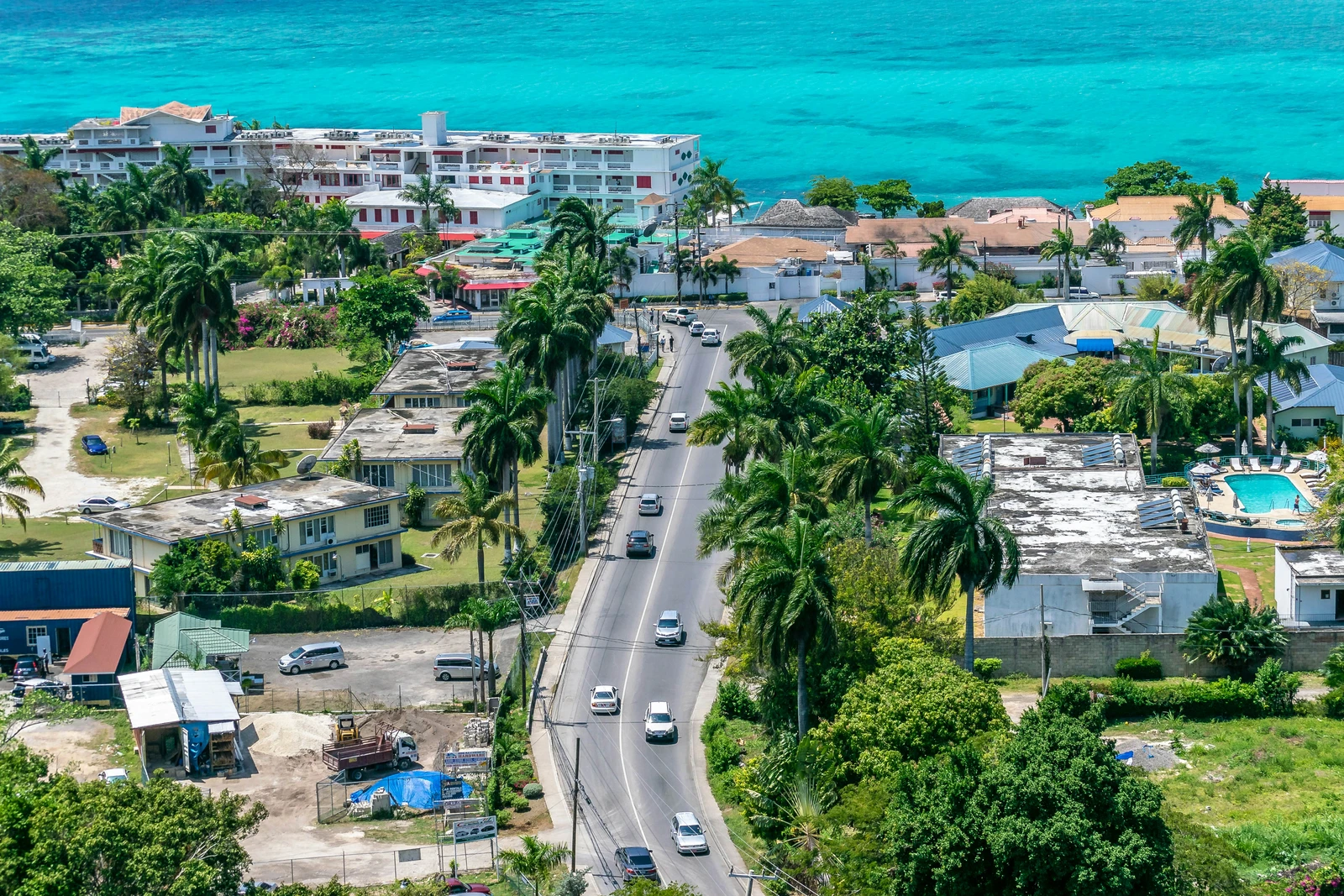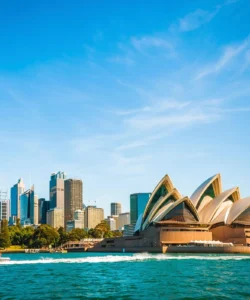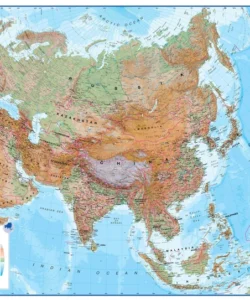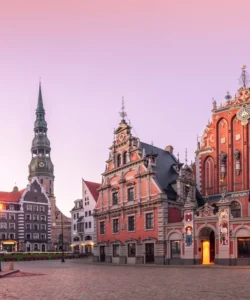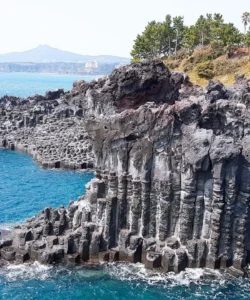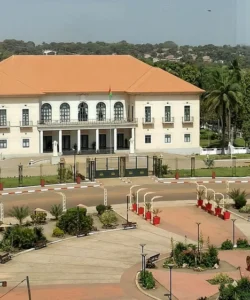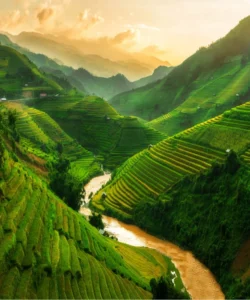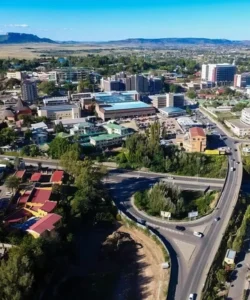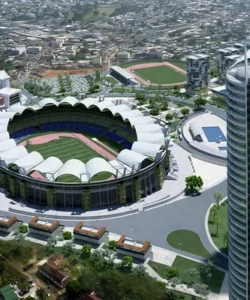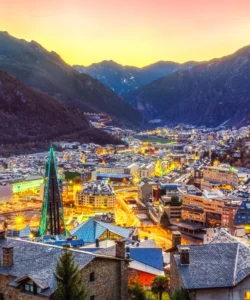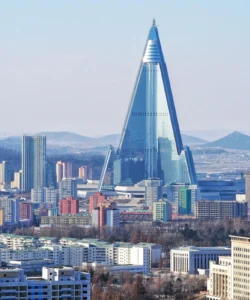Jamaica, a vibrant island nation in the Caribbean, is renowned for its rich culture, reggae music, stunning landscapes, and warm, friendly people. It’s a popular destination offering a diverse range of experiences from adventurous activities to relaxed beach getaways.
![]()
Area and Population:
Jamaica has a total land area of approximately 10,991 sq. km (4,244 sq. mi). As of July 2024, the estimated population is around 2.83 million people.
Language:
The official language is English. Jamaican Patois (or Patwa), an English-based Creole language with West African influences, is also widely spoken and is an integral part of the local culture.
Currency:
The official currency is the Jamaican Dollar (JMD). However, the United States Dollar (USD) is widely accepted in tourist areas.
Religion:
The predominant religion in Jamaica is Protestant Christianity, with significant denominations including Seventh-day Adventist, Pentecostal, Baptist, and Church of God. Rastafarianism, though a minority religion, originated in Jamaica and has a strong cultural influence.
Capital:
The capital city of Jamaica is Kingston, the largest city on the island and its cultural and economic hub.
Major Cities/Towns:
Besides Kingston, other major cities and tourist centers include Montego Bay (a major tourism gateway), Ocho Rios, Negril, and Port Antonio.
Attractions:
Jamaica offers a plethora of attractions, blending natural beauty with cultural experiences:
- Dunn’s River Falls (Ocho Rios): One of Jamaica’s most famous natural attractions, where visitors can climb a series of terraced waterfalls that cascade directly into the Caribbean Sea.
- Blue Mountains: Home to the world-renowned Blue Mountain coffee, this majestic mountain range offers stunning hiking trails, lush forests, and breathtaking panoramic views.
- Seven Mile Beach (Negril): A picturesque stretch of soft white sand and calm, clear turquoise waters, ideal for swimming, sunbathing, and watching spectacular sunsets.
- Bob Marley Museum (Kingston): Located in the former home and recording studio of the legendary reggae artist Bob Marley, offering an immersive journey into his life and music.
- Port Antonio: A lush, serene area known for its natural beauty, including the Blue Lagoon (famous for its deep blue waters) and Reach Falls.
- Martha Brae River Rafting (near Falmouth): Enjoy a relaxing ride on a bamboo raft guided by a local captain, often with stories about the river and its surroundings.
- YS Falls (St. Elizabeth Parish): A less crowded alternative to Dunn’s River, featuring seven cascading waterfalls and natural pools, as well as rope swings and zip-lining.
- Rose Hall Great House (Montego Bay): A historic plantation house with a captivating history, rumored to be haunted by the “White Witch of Rose Hall.”
- Doctor’s Cave Beach (Montego Bay): A popular and beautiful beach known for its buoyant water, said to have healing properties.
Natural Wonders:
Jamaica’s landscape is rich with natural wonders:
- Waterfalls: Besides Dunn’s River and YS Falls, there are numerous other beautiful waterfalls like Mayfield Falls and Somerset Falls.
- Rivers and Lagoons: Many rivers flow through lush landscapes, and bioluminescent lagoons (like Luminous Lagoon near Falmouth) offer magical night experiences.
- Caves: Several cave systems exist, including Green Grotto Caves, with impressive stalactites and stalagmites.
- Mountain Ranges: The Blue Mountains and Cockpit Country are significant geological and ecological areas.
Architecture:
Jamaican architecture reflects its diverse history, incorporating influences from its indigenous Taino past (though little remains), European colonial powers (Spanish, then British), and post-colonial developments.
- Colonial Grandeur: Many plantation great houses (like Rose Hall and Devon House) showcase Georgian architectural styles adapted to the tropics, featuring wide verandas, high ceilings, and sturdy stone or timber construction.
- Vernacular/Folk Architecture: Traditional Jamaican homes often feature simple wooden structures, vibrant colors, corrugated iron roofs, and a practical design to suit the climate.
- Kingston: Features a mix of colonial buildings, Art Deco influences, and more modern commercial and residential structures.
- Churches and Public Buildings: Many historic churches (e.g., St. James Parish Church in Montego Bay) and public buildings display British architectural elements.
Roads:
Jamaica has an extensive road network, including highways and local roads. Driving is on the left-hand side of the road. While major highways are generally well-maintained, secondary roads can be narrow, winding, and sometimes in poor condition with potholes. Driving in Jamaica can be challenging due to aggressive local driving habits, limited signage, and poor lighting in rural areas at night. Toll roads connect major cities like Kingston and Montego Bay.
Hotels:
Jamaica offers a vast array of accommodations, from large all-inclusive resorts to boutique hotels, villas, and guesthouses, catering to various budgets and preferences.
- All-Inclusive Resorts: Brands like Sandals, Beaches, RIU, Secrets, and Hyatt Zilara/Ziva are very popular, particularly in Montego Bay, Ocho Rios, and Negril.
- Luxury Boutique Hotels: The Tryall Club, GoldenEye (Ian Fleming’s former home), and The Caves offer exclusive and unique experiences.
- Smaller Hotels and Guesthouses: Abundant options provide a more local and intimate experience.
Restaurants:
Jamaica’s culinary scene is a flavorful journey, celebrated for its bold spices and fresh ingredients. Dining options range from fine dining establishments to casual roadside eateries and jerk stands.
- Scotchies (Montego Bay/Ocho Rios): Famous for authentic jerk chicken and pork cooked over pimento wood. A must-try for local flavor.
- Miss T’s Kitchen (Ocho Rios): Known for traditional Jamaican dishes in a charming garden setting.
- Ivan’s Bar & Restaurant at Catcha Falling Star (Negril): Offers cliffside dining with stunning sunset views and excellent Jamaican cuisine.
- Devon House I-Scream (Kingston): A popular spot for delicious gourmet ice cream in a historic setting.
- Pelican Bar (off Treasure Beach): A unique, rustic bar built on a sandbar in the ocean, serving fresh seafood.
- Many resorts also feature multiple dining options, often including international and local cuisine.
Cuisine:
Jamaican cuisine is a vibrant and spicy fusion of African, Spanish, Indian, and British influences.
- Jerk: The most iconic Jamaican cooking style, involving meat (chicken, pork, fish) dry-rubbed or wet-marinated with a potent blend of spices (allspice, scotch bonnet peppers, thyme, scallions), then slow-cooked over pimento wood.
- Ackee and Saltfish: The national dish, a savory stir-fry of ackee fruit (which resembles scrambled eggs) and salted codfish, often served for breakfast.
- Curried Goat/Chicken: Flavorful curries showcasing Indian influence.
- Escovitch Fish: Fried fish marinated in vinegar with onions and scotch bonnet peppers.
- Oxtail Stew: A rich and hearty stew.
- Rice and Peas: A staple side dish, made with kidney beans or gungo peas cooked with rice and coconut milk.
- Patties: Flaky pastry filled with various savory fillings (beef, chicken, lobster, vegetable).
- Festival: Lightly fried sweet dough, often served with jerk or escovitch fish.
- Callaloo: A leafy green vegetable, often steamed or used in soups.
- Tropical Fruits: Abundant and delicious, including mangoes, papayas, guavas, and soursop.
- Blue Mountain Coffee: One of the world’s most prized and expensive coffee varieties.
- Rum: Jamaica is famous for its rum, with various distilleries like Appleton Estate.
